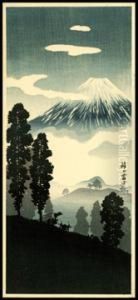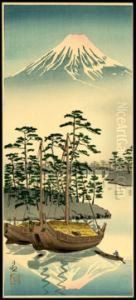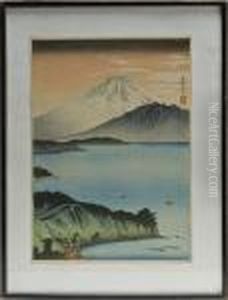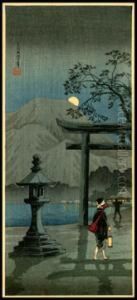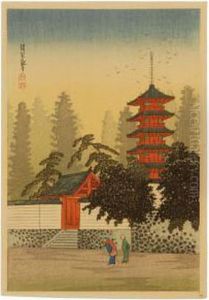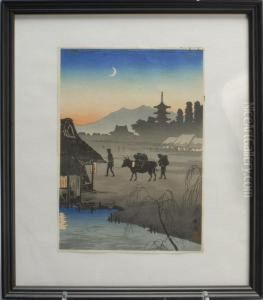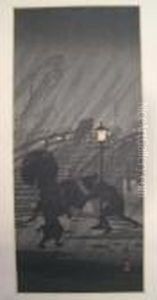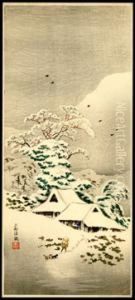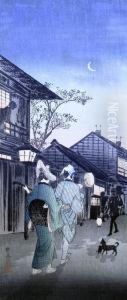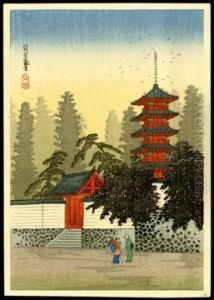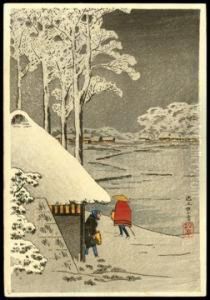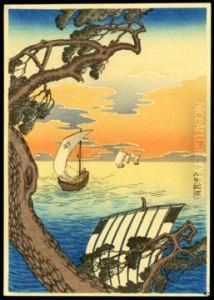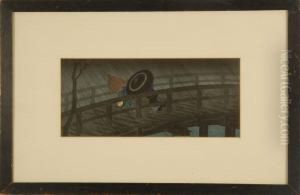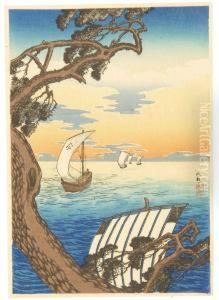Hiroaki Shotei Paintings
Hiroaki Shotei, also known as Takahashi Shōtei, was a prominent Japanese artist, widely recognized for his contributions to the Shin-Hanga movement in Japanese woodblock printing. Born in Tokyo in 1871, Shotei embarked on his artistic journey at a young age, initially training under the tutelage of his uncle, Matsuki Heikichi, an influential figure in the art publishing industry. This foundational experience exposed him to the intricacies of woodblock printing, a traditional Japanese art form that would become the central medium of his career.
Shotei's artistic identity was deeply influenced by the changing tides of Meiji-era Japan, a period marked by rapid modernization and increased Western influence. Despite these changes, he remained dedicated to traditional Japanese themes and techniques, particularly focusing on landscapes, flora, and fauna. His early works are noted for their meticulous detail and vibrant colors, characteristics that would define his style throughout his career.
In 1907, Shotei became one of the first artists to collaborate with the publisher Watanabe Shozaburo, a key figure in the development of the Shin-Hanga movement. Shin-Hanga, or 'new prints', sought to revitalize traditional ukiyo-e art by incorporating Western techniques and perspectives, thus creating a fusion that appealed to both domestic and international audiences. Shotei's contribution to this genre was significant; his landscapes and scenes of everyday life in Japan captured the beauty and tranquility of the natural world, earning him widespread acclaim.
The Great Kanto Earthquake of 1923 destroyed much of Tokyo, including Shotei's home and the majority of his artworks. Despite this devastating loss, he continued to produce new works, demonstrating remarkable resilience and dedication to his craft. In the years following the earthquake, Shotei adopted a more modern and somewhat abstract style, reflecting the evolving tastes of the art world.
Hiroaki Shotei's legacy is that of a master woodblock printer who played a crucial role in the Shin-Hanga movement, bridging the gap between traditional Japanese art and the new aesthetic sensibilities of the 20th century. His works continue to be celebrated for their beauty and historical significance, offering insights into a pivotal moment in Japanese art history. Shotei passed away in 1945, leaving behind a body of work that remains influential to this day.
